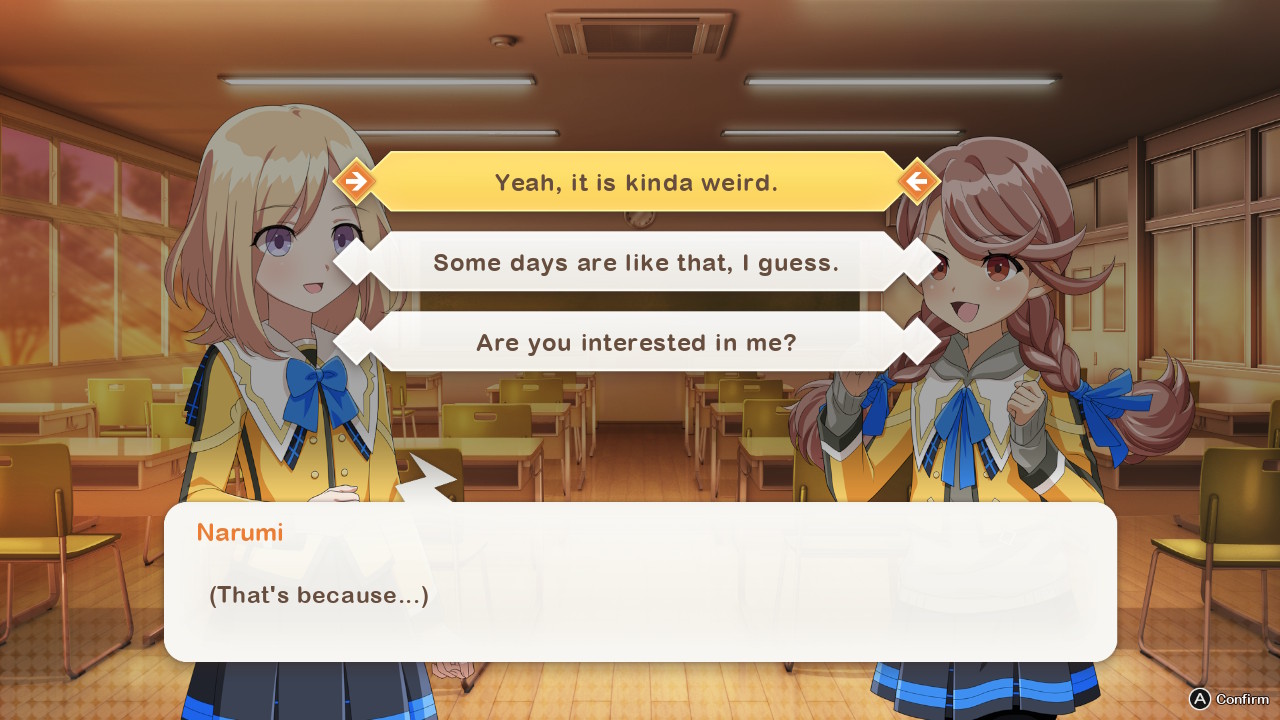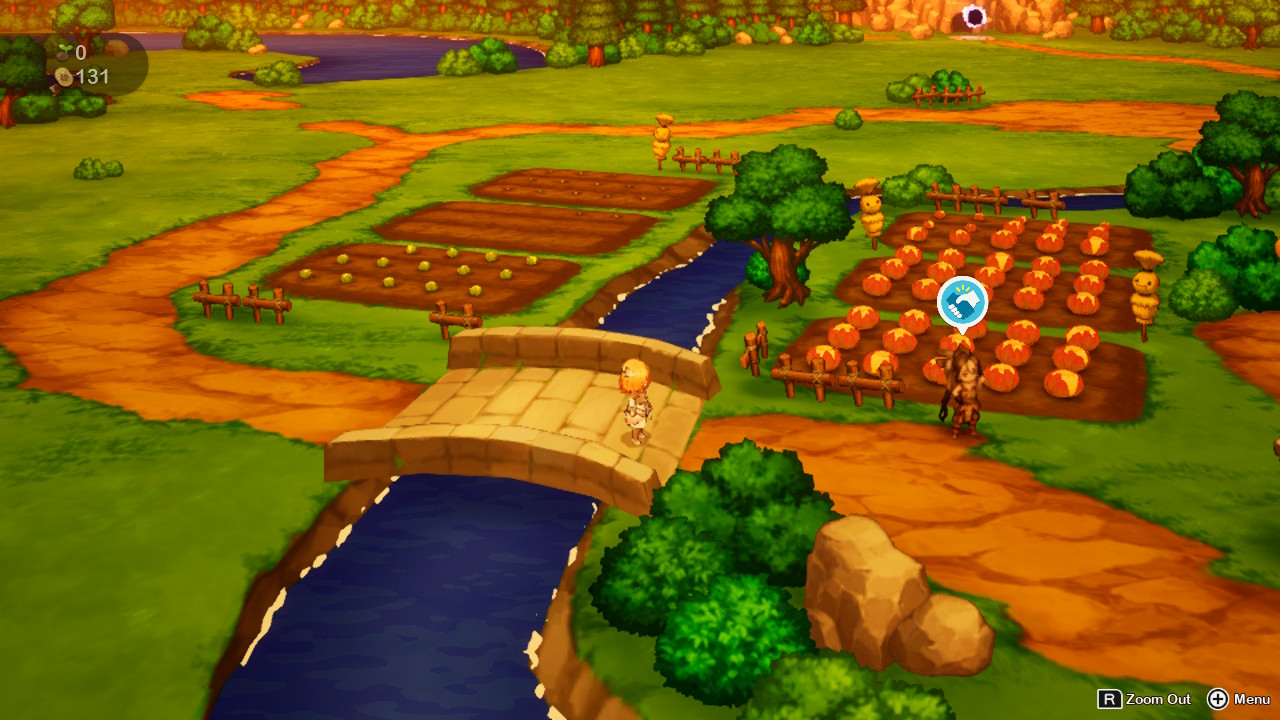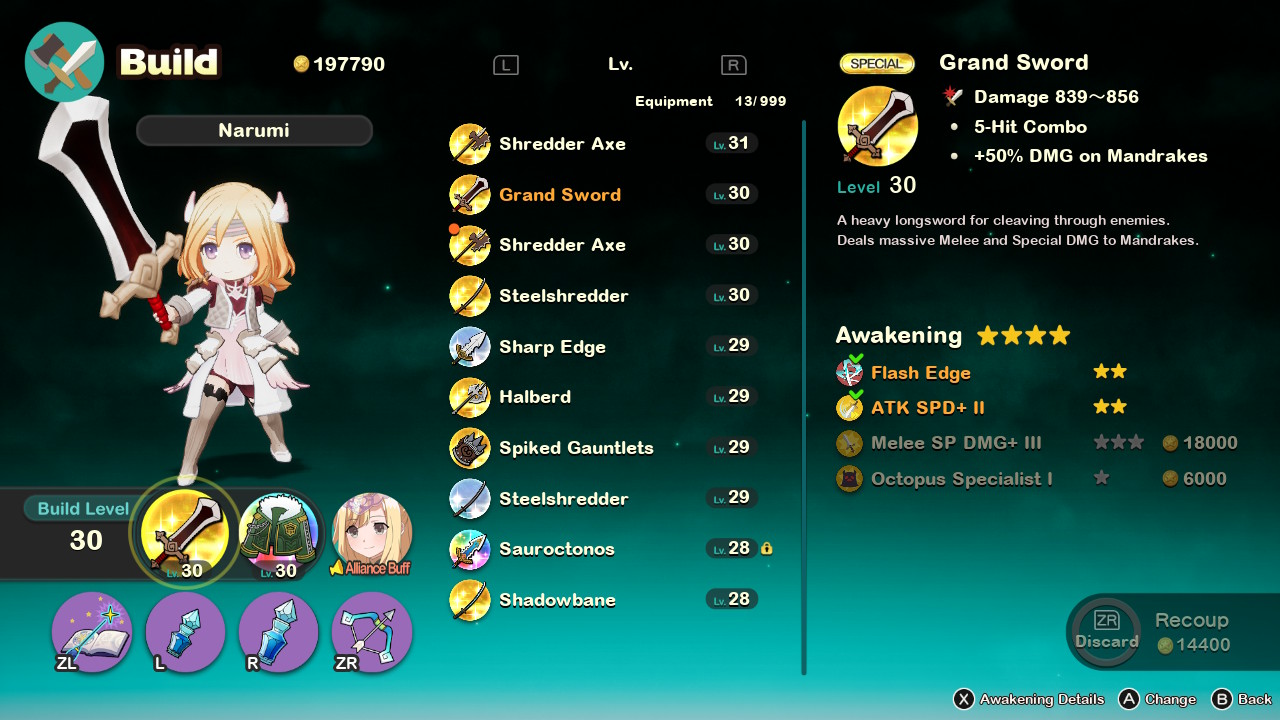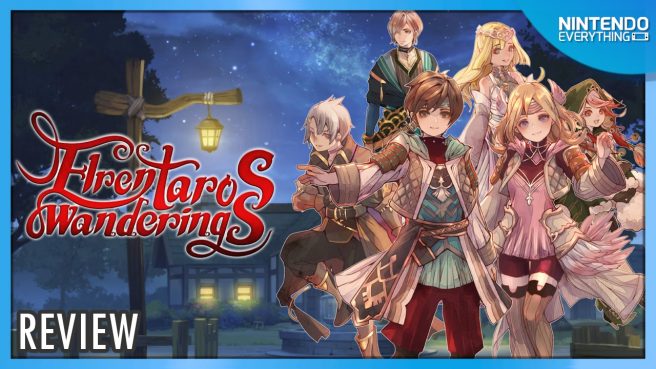System: Switch
Release date: August 15, 2024
Developer: Hakama
Publisher: Red Art Games
Hakama may have only released a handful of games since their formation by Yoshifumi Hashimoto in 2018, but with Rune Factory 4 Special and Rune Factory 5 as two of their more noteworthy releases, it’s fair to say the focus is more on quality over quantity. Unfortunately, although their latest title Elrentaros Wanderings (previously known as Rear Sekai) has hints of their trademark creative brilliance, ultimately fails to deliver on almost every front.
Elrentaros Wanderings takes place in the land of Melvania, in the titular village of Elrentaros. The protagonist (male or female) is your run-of-the-mill amnesiac who finds themselves in the familiar and unenviable position of being the only one with the capability of defending the village and its inhabitants by braving the various dungeons that appear nearby. However, once they go to sleep at night, our hero is transported to another place entirely, which bears a startling resemblance to a Japanese high school, and where they and many of the townsfolk (or at least, people who strongly resemble them and happen to share their names and what passes for their personalities) also happen to reside. There is the sense that one, or perhaps even both, of these places is not quite right. It’s up to you to deepen your bonds with the townspeople in Elrentaros to ultimately discover the truth behind this mysterious set of circumstances, and figure out which of these two realities is the one where you belong.
What makes Elrentaros Wanderings so interesting (at least initially) is that you’re never sure which of the two worlds you’re traveling between every time you go to sleep is the real one. It blurs the line between fantasy and reality quite effectively to keep you guessing: are you a hero being transported to a more ordinary and familiar life, or vice versa? Or is something else going on here? If you’re at all familiar with the isekai genre the answer seems obvious as the game’s premise is clearly inspired by this, but it throws just enough doubt into the mix to suggest that the obvious answer isn’t necessarily correct. It’s a shame that despite this promising setup the game never really explores it, as the high school setting is limited solely to a handful of cutscenes in-between unlocking new dungeons, and it never explores its small cast and how (or even if) they differ from their counterparts in the other world. Even as the game reaches its climax it never really offers a satisfying explanation about how things came about, and although I appreciated the small amount of input I was given over the course of the story and its conclusion, I was never given enough reason to be invested in the outcome.

Within that fantasy world things are little better, as characters remain flat and uninteresting even if you take the time to interact with them beyond what the game will force on you as a part of the story. The most interesting quality most of them have is their relationship to their alternate selves, although as this is never explored it is more of a curiosity than a major plot point. You can enter a romantic relationship with several of them, with same-sex relationships a possibility, although this doesn’t affect the course of the story or provide any tangible benefit in the game, as each possible romance option can be given gifts for small passive benefits regardless.
Most of your time in Elrentaros Wanderings will be spent exploring one of the game’s dungeons, which are divided into ten floors and culminate in a boss battle. Most of the time you can simply run through to the exit ignoring enemies entirely if you choose, although some floors will require that you defeat all enemies before the exit appears. Floors are all quite linear, although most have a few hidden surprises in the form of treasure chests and warp panels to small EX stages that have a few treasure chests and enemies that drop higher level equipment if you defeat them, so it’s generally worth exploring them the first time. There are also five missions to complete in each dungeon: two of these will always be to clear it with a build level at or below the recommended level and to clear it without your HP falling to zero, but the remaining three will vary depending on the challenge level. You may need to clear a stage without taking any damage, defeat the boss using a particular weapon type, or avoid getting a status effect.
The reward for these is often a special item to give to one of the game’s characters to improve your Likability with them, meaning you will need to do a lot of these in order to advance the story, as only by improving your relationship with the townspeople can you restore the mirror and unlock additional dungeons. Although you can clear them on your first run through if you meet the requirements, you won’t know what those requirements are until you either fail them or you clear the dungeon for the first time, meaning you will likely need to replay the level in order to complete them.

Combat in the game isn’t particularly complex. Most enemies will go down in one or two hits, although some take an unusual amount of damage even when you’re above the recommended level. Alongside your weapon of choice you also have magic items that can be acquired from townspeople, but the cooldown timer on these makes them quite inefficient considering the amount of damage they do is often miniscule, and there is no real benefit to using them when the most effective way of defeating enemies is to simply hold down the button and watch as your character hacks away at them, which feels distinctly unsatisfying the more you play.
As you progress through the dungeon you will acquire a lot of equipment, with the usual mix of weapons that come with various different strengths and drawbacks: for example, Katana hit much harder than Fists, but are notably slower and have fewer hits per combo. Weapons come in four tiers of rarity, and can be upgraded further with Awakening skills, which grant them additional bonuses for the price of a bit of gold and a few slots, with the number of slots a skill takes up being determined by its strength. What Awakening skills are available to a weapon is entirely random, and you’ll need to choose wisely what you want to unlock, as there is no way to undo the choice once it is made and weapons do not have enough space for every skill they can acquire.
There is no way to increase the level of equipment however, which means you’ll be selling off your gear constantly. This can be particularly frustrating at times, as rarity and skills are entirely random, and it will often be the case that a weapon with mediocre skills will out-damage one with much better ones solely because it is a higher level. I found that overall this frustrated any sense of progression rather than enhanced it, as it devalues skills to focus purely on damage potential: if you don’t keep within a few levels of the recommended build level of each dungeon, enemies will take an extremely long time to defeat. The game provides no incentive to seek weapons with higher rarities or better skills when one around the right level is sufficient, even on higher difficulties where enemies will deal more damage. As armor provides higher HP at increased rarities and your dodge skill is also tied to a cooldown, it suffers from the same problem.

Outside of exploring the dungeons there is little to do, with NPCs offering nothing in the way of interesting dialogue outside of their sidequests, and a small farming minigame where you plant seeds, which can be harvested for coins after you’ve entered a dungeon a few times. These can be exchanged for gifts with characters you can romance, which also unlock support benefits such as health increases and weapon damage boosts, but the cost of these is extremely high when compared to the yield of crops you’ll have each time, and the benefits are not particularly significant to gameplay. At best, these provide some added flavor text for a few of the game’s characters.
To its credit, Elrentaros Wanderings at least manages to tie all these elements of its gameplay together quite nicely: you can complete most of the missions on your first run through just by being careful and thorough and resources are plentiful, so there is never any particular need to grind a dungeon repeatedly to get equipment strong enough to see you through the next one. Despite the repetitive and tedious nature of the gameplay the game respects your time to some degree, and I never felt particularly disadvantaged despite the recommended build level always being several levels above what I currently had equipped.
But what the game lacks is any real incentive to keep playing it, and it quickly becomes a mindless chore without any real sense of progression. Any equipment you acquire will become obsolete by the time you’ve cleared the next dungeon, the layout of dungeons doesn’t change notably or at all between challenge levels, with only the boss you face at the end being different, and the lackluster story makes developing your relationship with the townsfolk feel more like something you are forced to do, rather than a reward for your efforts.
Perhaps the most appealing element of Elrentaros Wanderings are its visuals, which are strongly reminiscent of Rune Factory, with character portraits in the signature art style of the series and the dungeons being played from the classic isometric viewpoint. Although there is a notable lack of enemy variety, the designs all have that same appealing quality to them, with bosses being more noteworthy for their cute-yet-menacing aesthetic. Despite the relatively low resolution visuals, the game struggles to run on Switch at times when a large number of enemies are on screen, with one particular enemy type causing notable frame drops when they explode into a small swarm. Although by no means game-breaking, it can be quite distracting in the middle of combat.
The Verdict

In a lot of ways, Elrentaros Wanderings feels like an unfinished demo for a better game. It has some great ideas and shows a lot of promise, but it ultimately fails to deliver on any of it. There is something addicting in a mindless sort of way to its gameplay that makes it easy to pick up and play, but the lack of any real incentive for doing so often makes it feel like a waste of time, and it quickly becomes repetitive as you slog through the exact same dungeons repeatedly for equipment which you will need to discard after the next dungeon anyway. There are certainly better examples of the genre out there which offer a more rewarding experience for your time.
Elrentaros Wanderings copy provided by the publisher for the purposes of this review.
